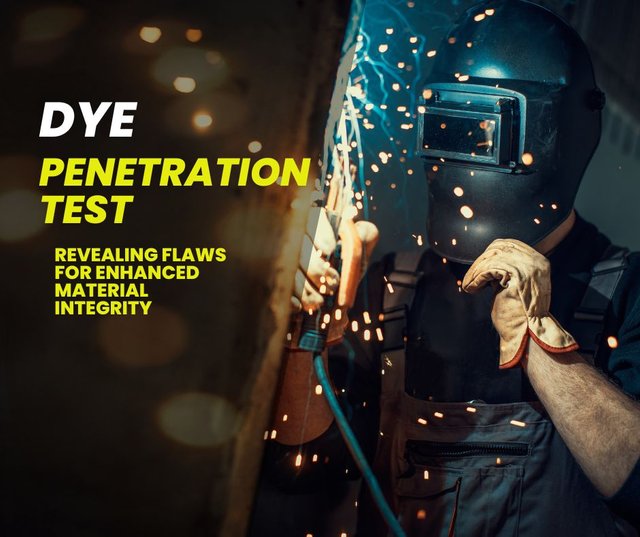
In the realm of non-destructive testing (NDT), the dye penetration test, also known as liquid penetrant testing or PT, stands as a versatile and widely used method for detecting surface-breaking defects in a variety of materials. This testing technique plays a crucial role in ensuring the structural integrity, reliability, and safety of components across industries like manufacturing, aerospace, automotive, and more. The dye penetration test's ability to reveal even the smallest imperfections makes it a cornerstone of quality control and inspection processes.
Understanding the Dye Penetration Test:
The dye penetration test works on the principle of capillary action, which exploits the natural tendency of liquids to be drawn into narrow spaces. This principle allows the test to identify tiny cracks, pores, laps, and other surface discontinuities that might otherwise remain hidden to the naked eye. By using a combination of highly penetrative dyes and contrast-enhancing developers, this method highlights defects that are barely visible or even invisible without magnification.
Test Procedure:
The dye penetration test follows a systematic procedure that involves several key steps:
Pre-cleaning: The surface of the component to be tested is thoroughly cleaned to remove any contaminants, oils, or residues that might interfere with the penetration of the dye.
Application of Penetrant: A liquid penetrant, often a brightly colored dye, is applied to the surface. This penetrant is allowed to seep into any open defects by capillary action.
Dwell Time: The penetrant is left on the surface for a specific period known as the "dwell time." This duration allows the penetrant to fully infiltrate any potential defects.
Excess Penetrant Removal: After the dwell time, the excess penetrant is carefully removed from the surface, leaving behind only the penetrant that has entered into defects.
Application of Developer: A white, contrasting developer is applied to the surface. This developer draws out the trapped penetrant from the defects, creating visible indications that can be easily detected.
Indication Interpretation: Highly trained inspectors examine the surface for any visible indications that result from the trapped penetrant. The size, shape, and location of these indications provide insights into the nature and severity of the defects.
Cleaning and Reporting: Once the inspection is complete, the developer and remaining penetrant are removed from the surface. The inspector then compiles a report detailing the findings and their implications.
Advantages and Limitations:
The dye penetration test offers several advantages that contribute to its popularity:
Cost-Effective: The equipment and materials required for the test are relatively affordable, making it accessible for a wide range of applications.
Versatility: It can be applied to a variety of materials, including metals, plastics, ceramics, and even certain non-porous materials.
High Sensitivity: The test can detect extremely small defects, enhancing the likelihood of identifying potential issues.
However, the dye penetration test also has limitations:
Surface Defects Only: It can only detect defects that are open to the surface. Internal defects cannot be identified using this method.
Labor-Intensive: The process involves multiple steps and requires skilled inspectors for accurate interpretation of results.
Conclusion:
The dye penetration test is a valuable tool for quality control and defect detection in a wide array of industries. Its ability to uncover surface defects with high sensitivity makes it an integral part of ensuring the reliability and safety of components and structures. While it has its limitations, its cost-effectiveness and versatility have established it as a fundamental non-destructive testing method, contributing to the production of high-quality and safe products across various sectors.